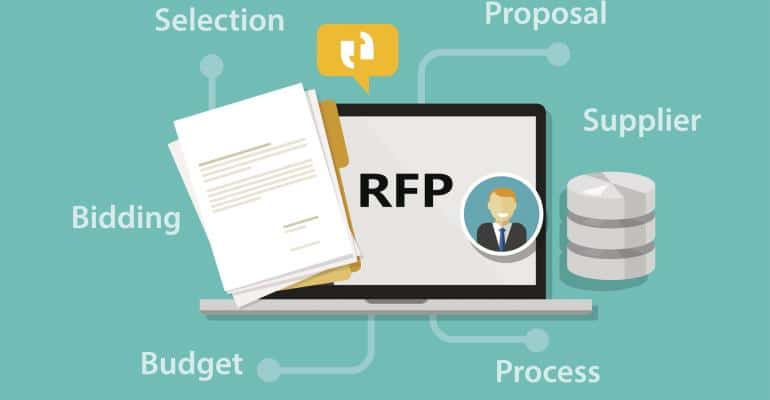In the realm of RFP software achieving results heavily relies on implementation. This article delves into the significance of an implementation process. Offers valuable insights, on selecting the right software solution preparing for seamless integration and ensuring successful adoption through training and onboarding. Furthermore it discusses support and continuous improvement to guide organizations towards long term success with their RFP software. The key to unlocking the potential of RFP software lies in harnessing the power of implementation.
Recognizing the Importance of a Smooth Implementation Process
To guarantee the adoption of RFP software it is crucial to comprehend the importance of implementation. Change management plays a role in this process as it involves managing the transition, from outdated systems to new software. It is imperative to have a defined plan that guides the implementation process and addresses any challenges. Following practices is also essential to ensure efficient software implementation. This includes conducting training sessions for employees offering support and resources and regularly evaluating the performance of the software.
Selecting the Right RFP Software Solution
Selecting the RFP software solution and RFP implementation services is a step, in ensuring a smooth transition and successful integration of the new system. To find the fit it is essential to assess the features of software options. It is important to evaluate whether the software provides the functionalities that align with the organizations requirements. Take into account factors such as templates, collaborative features and compatibility with existing systems.
Moreover cost considerations play a role in budgeting for the solution. Organizations should analyze the pricing structure offered by software providers taking into account both expenses and ongoing costs. Striking a balance, between desired features and allocated budget is crucial to ensure a cost solution that fulfills the organizations needs.
Getting Ready, for a Seamless Integration Process
When getting ready, for an integration process of RFP software it’s crucial to establish lines of communication and coordinate with all the relevant individuals involved. Integration can sometimes pose challenges when different systems and processes need to be aligned. To overcome these challenges it’s important to adhere to practices.
It’s also vital to maintain communication and collaboration, with IT teams and vendors in order to ensure integration.
Testing and data migration should be meticulously planned and executed in order to minimize any disruptions that may occur during the process.
Providing Training and Onboarding for a Successful Transition
To ensure adoption of RFP software, the next step after an integration process is to provide comprehensive training and onboarding for all users.
Effective training techniques are vital, in equipping users with the skills and knowledge to make the most of the software. This can involve training sessions, online tutorials and user manuals. It’s crucial to personalize the training based on each users needs, taking into account their role and level of expertise. Additionally measuring adoption success is important to identify any gaps, in training or areas where additional support may be required.
By tracking user engagement usage statistics and gathering feedback valuable insights can be gained regarding the effectiveness of the training program. Allow for adjustments to be made.
Offering Ongoing Support and Constant Enhancements
How can organizations ensure that they provide support and continuously improve their implementation of RFP software? It is essential to focus on enhancing the user experience and measuring the performance of the software.
To improve the user experience organizations should regularly gather feedback from users. Make necessary updates to meet their needs and preferences. This can involve conducting surveys holding user interviews or organizing user testing sessions. Additionally it’s crucial for organizations to establish a support system with a trained team that can address any issues or answer questions promptly. This ensures an user experience and effective support, throughout the software implementation process.
FAQs
How time does it typically take to finish the implementation process?
The duration of the implementation process, for RFP software varies based on factors such as the complexity of the software preparedness and availability of resources. Typically a planned and executed implementation can take weeks to a few months.
What are some obstacles or hurdles that organizations often face when implementing RFP software?
Organizations commonly face challenges like inadequate user training and resistance to change when implementing RFP software seamlessly. These obstacles can impede the integration of the software into an organizations workflow and processes.
Are there any requirements or compatibility concerns that should be taken into account when choosing an RFP software solution?
When choosing an RFP software solution it is crucial to consider requirements and compatibility issues. This ensures an implementation process while minimizing challenges or obstacles that may arise.
What are some practices, for getting employees and teams ready, for the integration process?
Preparing teams effectively is essential, for an integration process. Best practices include communication, comprehensive training and involving stakeholders. By following these practices organizations can ensure adoption of RFP software while maximizing its benefits.
How can organizations maintain support?
How can we ensure improvement after the implementation of RFP software?
To ensure ongoing support and foster continuous improvement post RFP software implementation organizations should establish a dedicated support team regularly evaluate performance and actively seek feedback, from users to identify opportunities, for enhancement and optimization.








